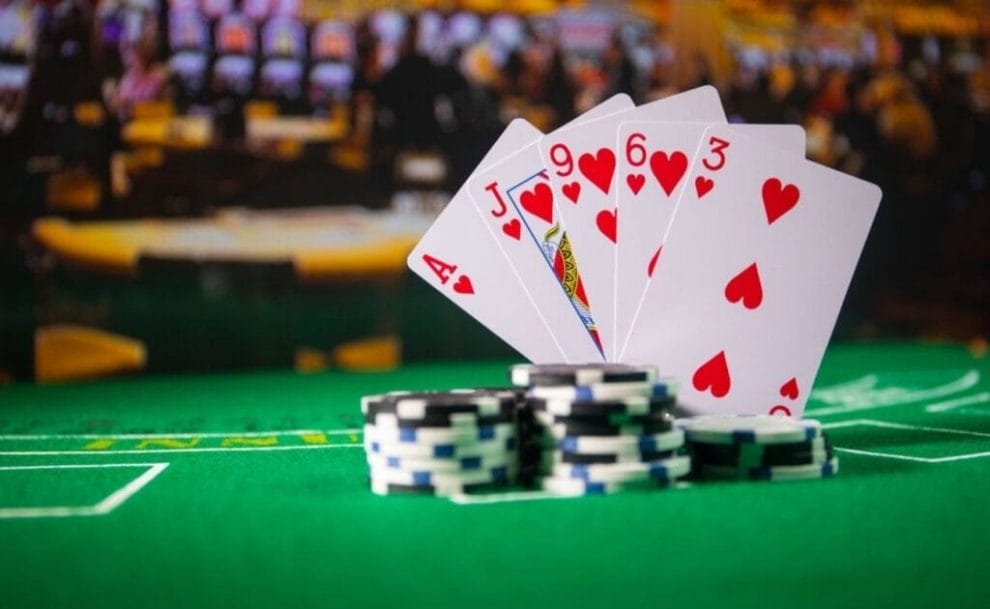
There comes a time in every poker player’s career when they find themselves playing with a short stack. It can feel very uncomfortable to play against opponents who have more than double the amount of chips you have, and many players in this situation simply give up hope and resign themselves to crashing out of the tournament to go home and play poker without chips. But it doesn’t have to be that way. In fact, with an excellent short stack poker strategy, you can beat the odds and come out on top at the end of the day. Keep reading to understand the fundamentals of winning short stack play in live and online poker.
Defining Short Stacks in Poker
Short stack poker players come in two varieties. There are those who play with a short stack because they have no other option and those who do so as a deliberate choice.
Players are typically forced to play with short stacks in poker tournaments at some point. The reason is simple. Tournaments usually don’t allow players to reload their stacks with new chips. The only way to increase your stack is to take chips from other players. As a tournament progresses, some players’ stacks will expand beyond the starting level — typically 100 big blinds (BB), although the number can vary — while others will shrink. A player with 20 or fewer BB in chips is considered short-stacked.
In cash games, players have the option to buy as many chips as they want. Some will have 200 BB or more to practice their deep stack strategy; others will maintain a healthy 100 BB stack. Then, some players adopt a short stacking poker strategy with 40 BB in chips or less.
Why You Need a Short Stack Strategy

Now you know how big short stacks are in poker, but what does it mean? The fact is that stack size should have a massive influence on your poker strategy. If you participate in live or online poker tournaments, you will not survive if you don’t know how to adapt to a short stack situation. You’ll need a plan to get your dwindling stack back into good shape, which will involve adjusting your opening ranges, calling ranges, and three-betting ranges, among others. Should you succeed, your tournament survivability will increase, and you’ll also be able to exploit your knowledge in cash games by taking advantage of cash game players who aren’t used to playing against short stacks. This is precisely what short stacking poker players set out to do.
The Fundamentals of Short Stack Play

In cash games and poker tournaments alike, most of a player’s decisions will come before and on the flop, as they simply don’t have enough chips to play the turn and river. The good news here is that the decision-making process becomes much more straightforward.
Develop Your Push-Fold Strategy
In poker tournaments especially, every serious player needs to have a push-fold strategy in place. The reason is that when you drop to 15 BB or less, the most profitable play with certain poker hands is simply to shove your entire stack or fold. The best way to start developing a push-fold strategy is to memorize the shoving ranges for every position. As a general rule, the further around the table you go (from under the gun to the big blind), the wider the range you can profitably push all in. There are many preflop shoving charts available online. More advanced tournament players will factor in their opponents’ calling range rather than mindlessly following the charts.
Adjust Your Opening Range
Instead of going all in with a short stack, it’s sometimes correct to call or raise. However, it isn’t profitable to play the same ranges with a short stack as with a deep stack. This is because the stack-to-pot ratio (SPR) transfers value from suited and connected hands to Broadway cards and strong high cards. In most situations, calling or raising is going commit a sizeable portion of your stack, so your preferred poker hands will be the following high pocket pairs and high unpaired hands:
- Pocket pairs from ace down to 6.
- Ace-king, ace-queen, ace-jack, ace-10 (all suited).
- King-queen, king-jack, king-10 (all suited).
Aces carry a lot of weight here because a short-stacked player will likely be pushing or going all-in on the flop, whether they catch a piece of it or not. In this situation, an ace has a better chance of beating the high card of an opponent who didn’t catch the flop, either.
In the final stages of a poker tournament, if it folds to you on the button, there are fewer players to beat. As a result, you can open-shove with a wider range of hands, for example:
- All hands containing an ace and another card.
- Most hands containing a king and another card.
- Strong hands containing a queen and another card.
Hands to remove from your opening range include lower pairs (from 5 down to 2), suited connectors, and suited aces. Your stack is too short for these hands to have good implied odds.
Adjust Your Bet Size
With a short stack, it’s important to avoid wasting more chips than you absolutely need to. As a result, you should never bet more than half the pot, and preferably less (30 or 40% should do). Because you have so few chips, you can’t really bet big enough to scare your opponents into folding. Betting smaller means you lose less when you have to fold.
Embrace Variance
A good short stack poker strategy will be profitable in the long run, but you’ll lose plenty of times along the way. This means you have to be aggressive and trust variance to pull up your win rate over time. Your short-stacked shoves will make you crash out of tournaments when they lose, but those losses will be reversed with interest if your plays eventually get you through the bubble and into the money. Basically, it’s okay to lose as long as you give yourself decent odds to win big.
A side benefit of this behavior is that you can use it to win money in cash games. This is because players with deep stacks prefer not to throw money away on what comes close to gambling, so they won’t call your crazy short stack raises — the same goes for passive players in any situation. This will enable you to steal the blinds and win small pots regularly and profitably — until they figure out your game and adjust their style, that is.
Play Poker Online at Borgata
Take your game to the next level at Borgata Online. Register for cash games and poker tournaments with stakes and buy-ins to suit every player type. Enjoy streamlined real-money poker action on a mobile app in the comfort of your home. Play it your way at Borgata Online.
